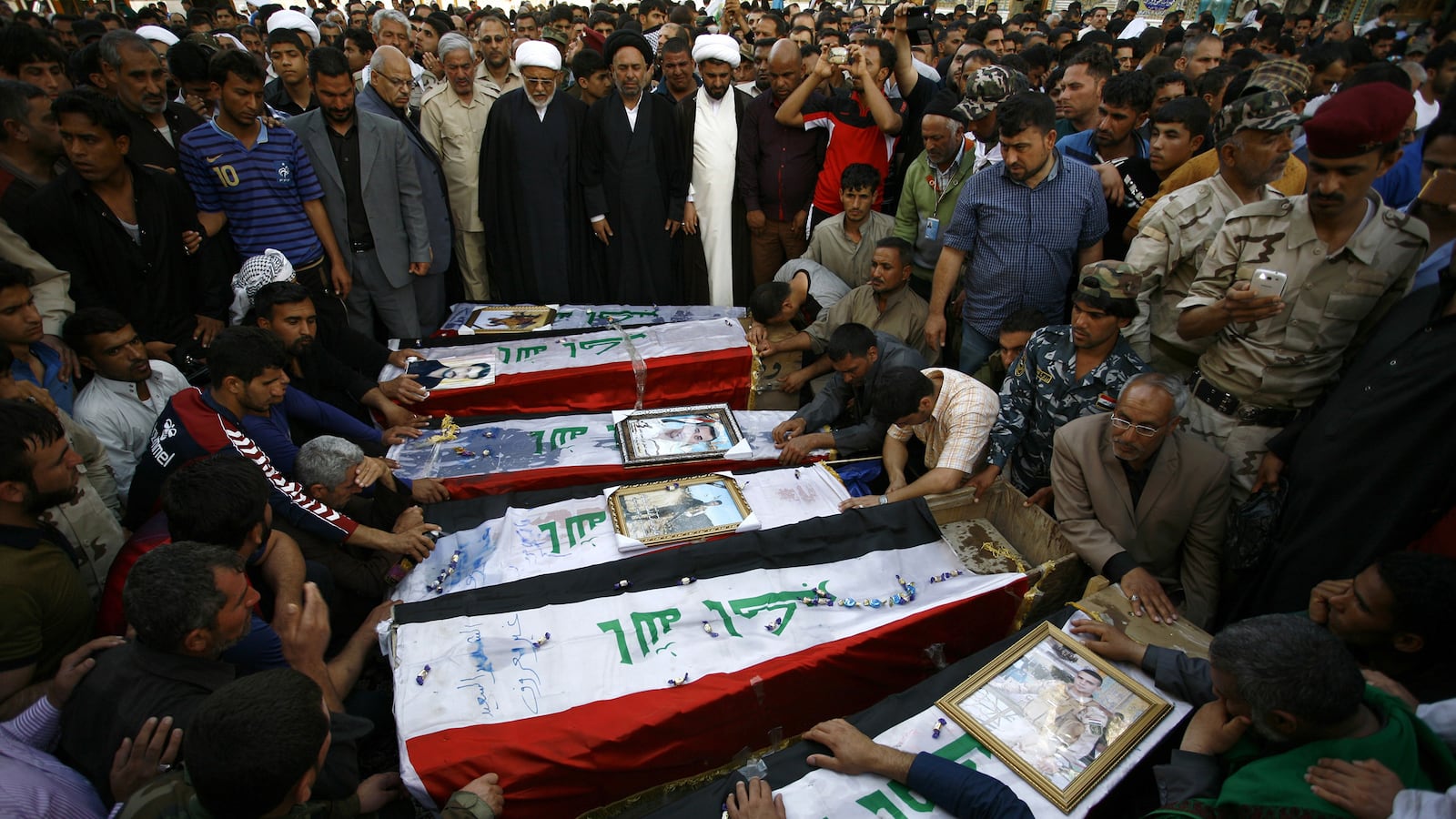The self-proclaimed Islamic State’s loss of the Iraqi city of Tikrit this week would not have been possible without thousands of rogue Iraqi Shiite militiamen, U.S. defense officials conceded.
And that could complicate coming battles, officials said.
With the first major victory over ISIS in Iraq, those militias, many of whom are backed by neighboring Iran, will now have a greater say in how aggressively and effectively Iraq goes after the ISIS threat. They could determine which cities to attack, how much to lean on the U.S.-led coalition and when to strike. And such a varied group of fighters will likely have differing opinions from the Iraqi government, the U.S.-led coalition, Iran and even among themselves, about what needs to happen next in the battle against ISIS.
Such growing influence by such varied non-state actors will only complicate future efforts against ISIS in Iraq, defense officials and experts agreed.
Will Iraqi Shiite militias be willing to fight for the majority Sunni city of Mosul in the north, Iraq’s second-largest city and the biggest ISIS stronghold? Or are they content with a buffer zone for the Shiite-dominated areas of Iraq, like Baghdad and areas south, which would end in Tikrit, 90 miles north of the capital?
Most importantly, a more powerful Shiite militia voice, experts said, is unlikely to lead to political reconciliation with the Sunni minorities that have felt ostracized in Iraq. And without an Iraq in which Sunnis feel included in the state and government, the very type of environment that led to the rise of ISIS still exists.
“That is what is we are most interested in. What happens in Tikrit now?” a senior defense official explained to The Daily Beast.
There is no evidence so far of Sunnis moving back to the homes in Tikrit, which would signal they feel comfortable going back to territory secured by Shiite-dominated forces. Instead, by Thursday, there were reports of militia fighters looting Tikrit.
“The Shiite militias continued ascension of influence will limit [Iraqi Prime Minister Haider] Abadi’s, I think, sincere effort to move the country forward in addressing Sunni issues and building political cohesion,” an adviser to the U.S. government tasked with monitoring and engaging with Iraqi officials told The Daily Beast. “The political way forward has been significantly undermined by the rise of Shiite militias.”
Many of the militia groups have received training and advice from Iran, which is presumed to have heavy sway over the militias. Given that, Iranian interests in the future of Iraq will come into play in how the militias progress after Tikrit. As of now, there are few indications that Iraqi militiamen want to take on ISIS in Mosul, roughly 260 miles north of Baghdad, which they consider their capital. Iranian leaders, however, said they are eager to eliminate the ISIS threat all together.
Signs of fissures between some the militias and Iran already have emerged, particularly from those militias not as dependent on Iran.
Hadi al Amiri, the current Iraqi minister of transportation and the head of the Badr Organization, one of the militias involved in the Tikrit battle, called for the next battle to move west to the restive Anbar province, which borders Baghdad and the Shiite dominated south. Meanwhile, the leader of the Iranian Revolutionary Guard’s elite Quds Force, Gen. Qassem Suleimani, who helped shape the ground campaign in Tikrit, called for a push to Mosul first
One month ago, Iraqi forces, along with Iranian weapons, advisors and military leaders, launched the campaign to reclaim Tikrit, best known as former Iraqi leader Saddam Hussein’s hometown, where ISIS had been entrenched for months. With Iranian commanders, notably Suleimani, on the ground, the U.S.-led coalition notably did not conduct air strikes over Tikrit. But as the campaign stalled, Iraqi officials asked for air support from the U.S.-led coalition. The U.S. agreed, on the condition that the militias answer to the Iraqi defense ministry and not to Iran or local commanders. While there were signs that Suleimani and some militias left, it was unclear how much the U.S. successfully culled Iranian influence on the battlefield.
The result was that 4,000 Iraqi ground forces and as many as 10,000 Shiite militiamen led the campaign in Tikrit, defense official said.
Even then, some were worried about the growing power of Shiite militias. In an interview with The Washington Post published March 20, retired. Arm Gen. David Petraeus said: “I would argue that the foremost threat to Iraq’s long-term stability and the broader regional equilibrium is not the Islamic State; rather, it is Shiite militias, many backed by—and some guided by—Iran.”
“They see it as their own victory even if it would have not happened without U.S. air support,” said Vali Nasr, dean of Johns Hopkins School of Advanced International Studies and longtime Iranian expert. “The U.S. prevented an unraveling but in the end, it was a big victory for the militias.”
That psychological conviction of victory, regardless of how important the coalition strikes were, Nasr said, will be enough to raise the militias’ influence in Iraq’s future.
U.S. officials have said they believe Baiji, the next city north of Tikrit toward Mosul, and Anbar province will be likely battle sites. And officials already appeared to be considering war plans that are not as dependent on militias.
“Yes, the militias were critical in Tikrit, but that does mean we could not have operations without them,” the defense official explained. Working around the militias is “not insurmountable.”





